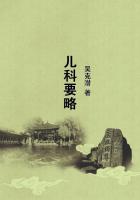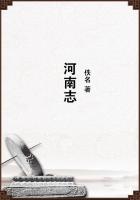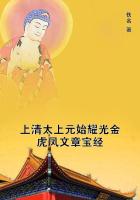But if at these solemn rites the fire was regularly made of oakwood, it follows that any man who was burned in it as a personification of the tree-spirit could have represented no tree but the oak. The sacred oak was thus burned in duplicate; the wood of the tree was consumed in the fire, and along with it was consumed a living man as a personification of the oak-spirit. The conclusion thus drawn for the European Aryans in general is confirmed in its special application to the Scandinavians by the relation in which amongst them the mistletoe appears to have stood to the burning of the victim in the midsummer fire. We have seen that among Scandinavians it has been customary to gather the mistletoe at midsummer. But so far as appears on the face of this custom, there is nothing to connect it with the midsummer fires in which human victims or effigies of them were burned. Even if the fire, as seems probable, was originally always made with oak-wood, why should it have been necessary to pull the mistletoe? The last link between the midsummer customs of gathering the mistletoe and lighting the bonfires is supplied by Balder's myth, which can hardly be disjoined from the customs in question. The myth suggests that a vital connexion may once have been believed to subsist between the mistletoe and the human representative of the oak who was burned in the fire. According to the myth, Balder could be killed by nothing in heaven or earth except the mistletoe; and so long as the mistletoe remained on the oak, he was not only immortal but invulnerable. Now, if we suppose that Balder was the oak, the origin of the myth becomes intelligible.
The mistletoe was viewed as the seat of life of the oak, and so long as it was uninjured nothing could kill or even wound the oak. The conception of the mistletoe as the seat of life of the oak would naturally be suggested to primitive people by the observation that while the oak is deciduous, the mistletoe which grows on it is evergreen. In winter the sight of its fresh foliage among the bare branches must have been hailed by the worshippers of the tree as a sign that the divine life which had ceased to animate the branches yet survived in the mistletoe, as the heart of a sleeper still beats when his body is motionless. Hence when the god had to be killedwhen the sacred tree had to be burntit was necessary to begin by breaking off the mistletoe. For so long as the mistletoe remained intact, the oak (so people might think) was invulnerable; all the blows of their knives and axes would glance harmless from its surface. But once tear from the oak its sacred heartthe mistletoeand the tree nodded to its fall. And when in later times the spirit of the oak came to be represented by a living man, it was logically necessary to suppose that, like the tree he personated, he could neither be killed nor wounded so long as the mistletoe remained uninjured. The pulling of the mistletoe was thus at once the signal and the cause of his death.
On this view the invulnerable Balder is neither more nor less than a personification of a mistletoe-bearing oak. The interpretation is confirmed by what seems to have been an ancient Italian belief, that the mistletoe can be destroyed neither by fire nor water; for if the parasite is thus deemed indestructible, it might easily be supposed to communicate its own indestructibility to the tree on which it grows, so long as the two remain in conjunction. Or, to put the same idea in mythical form, we might tell how the kindly god of the oak had his life securely deposited in the imperishable mistletoe which grew among the branches; how accordingly so long as the mistletoe kept its place there, the deity himself remained invulnerable; and how at last a cunning foe, let into the secret of the god's invulnerability, tore the mistletoe from the oak, thereby killing the oak-god and afterwards burning his body in a fire which could have made no impression on him so long as the incombustible parasite retained its seat among the boughs.
But since the idea of a being whose life is thus, in a sense, outside himself, must be strange to many readers, and has, indeed, not yet been recognised in its full bearing on primitive superstition, it will be worth while to illustrate it by examples drawn both from story and custom. The result will be to show that, in assuming this idea as the explanation of Balder's relation to the mistletoe, I assume a principle which is deeply engraved on the mind of primitive man.















